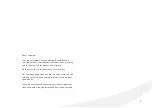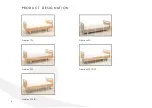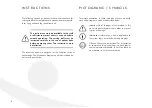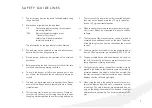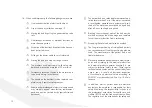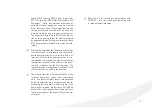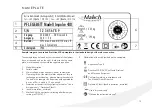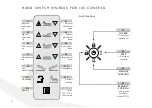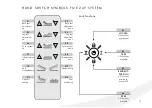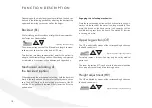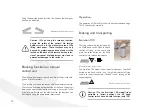
10
|
16. When used improperly, the following dangers may arise:
Unintended activation of electrical functions
Use of the bed by children under age 12
Moving the bed by pulling the power cable or side
rails
Simultaneous activation of electrical functions by
more than one person
Activation of the functions by patients who have not
been instructed in use
Pulling on the power cable to cut off electricity
Moving the bed on a slope or rough surface
The mattress used must comply with safety stan-
dards and may not be more than 120 mm thick.
Permanent presence of liquids in the motor area is
to be avoided (e.g. incontinence)
The handle on the backrest is to be replaced com-
pletely every 5 years for safety reasons.
Repairs and maintenance of electrical components
may use only original manufacturer replacement
parts and must be carried out by specially trained
personnel.
The patient bed is not intended for permanent ope-
ration for more than 2 min. If the motor is overused
or overheated, operations are automatically swit-
ched off. The motor can be switched on again only
after a 2-hour cooling-down period.
Blocking the mechanical parts of the bed must be
avoided as this can lead to damage and complete
loss of the motor function from overheating.
Exceeding the safe load must also be avoided.
The long-term positioning of immobilized patients
can cause bedsores if no other positioning aids are
used. The manufacturer of the patient bed is not
liable for bedsores.
Electrically operated patient beds are medical pro-
ducts and according to the medical product law
and medical product operator directive § 6 are
subject to technical safety checks. These regular
technical safety checks must be conducted at least
once a year. A visual and functional inspection
of functional and electrical safety according to
VDE0751 must be conducted. See. No. 13. Main-
tenance
In addition, electric patient beds are electrical
equipment; the employer is responsible for their
safety. Monitoring this responsibility is the duty of
the professional association for health care and
welfare (BGW) and the trade supervisory offices.
The regulations of the associations for safety and
Summary of Contents for Evolution Series
Page 1: ...Series Evolution Evolution Series I n s t r u c t i o n s...
Page 2: ...2...
Page 25: ...25...



